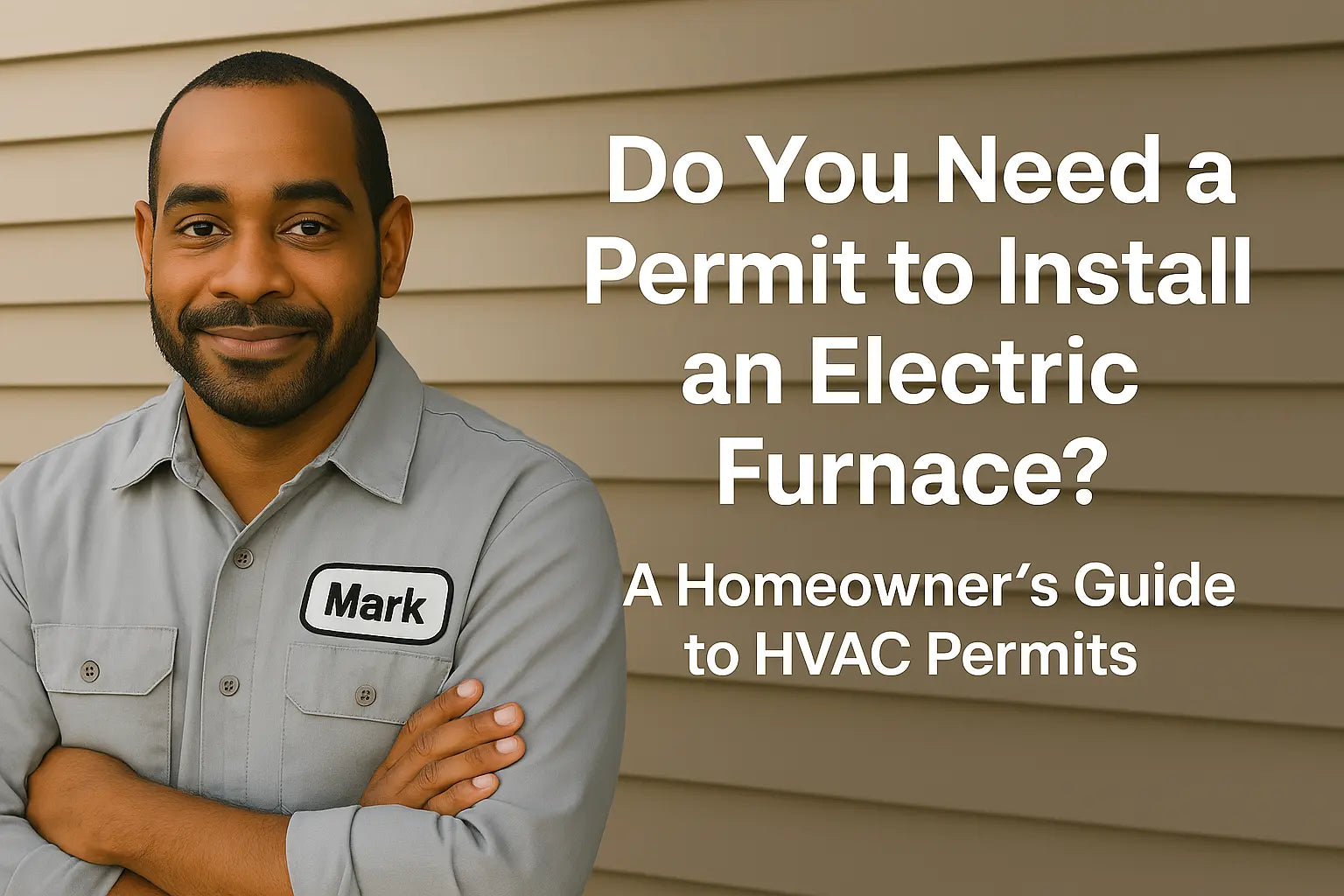Hi There 👋 — Let’s Talk Permits!
If you’ve ever found yourself asking, “Do I really need a permit to install an electric furnace?” you’re not alone. Whether you’re a DIY-er or hiring a licensed contractor, understanding local permit requirements isn’t just about following rules—it’s about keeping your home safe, legal, and insurable.
Let’s walk through what you need to know. 🛠️
So... Do You Actually Need a Permit?
Short answer: Yes, in most places. Whether you’re installing a brand-new electric furnace or replacing an old one, local building departments typically require a permit. That’s because you’re dealing with major systems: high-voltage electrical wiring, heating elements, and potentially ductwork or breakers that impact your whole home.
But here’s the kicker—permit rules vary widely by location. Some towns want multiple inspections. Others let licensed contractors pull permits for you. That’s why your very first move should be to check with your local municipality or building department. Don’t guess.
👉 Here’s a great resource to get you started: Energy.gov’s Home Heating Basics. It breaks down system types and what typically requires permitting.
Why Permits Exist in the First Place (It’s Not Just Bureaucracy 😅)
Permits might feel like just another hoop to jump through, but they actually protect you. Here’s how:
-
Safety inspections catch wiring errors that could cause fires 🔥
-
Code compliance ensures your system won’t blow breakers or trip overbuilding limits
-
Insurance validation – if your system causes damage, insurers may deny a claim if it wasn’t permitted
-
Home resale value – unpermitted HVAC work can hold up home sales or lower appraisal value
Skimping on a permit can really come back to haunt you, especially if you plan to sell your home down the line. A great overview of these risks can be found at American Home Shield’s HVAC inspection guide.
Who Pulls the Permit—You or the Contractor?
If you’re DIYing the install (you brave soul 🛠️), you’ll likely have to pull the permit yourself. Some areas even require you to pass a short test before issuing one.
Hiring a licensed pro? Most of the time, they’re responsible for pulling the permit and scheduling inspections. Always ask if it’s included in the estimate, though—don’t assume.
Need help finding a pro that’s familiar with your local code? Try using a vetted database like Angi’s list of HVAC contractors. You can search by zip code and read reviews from real homeowners.
What Happens During Inspection?
Here’s what to expect:
-
Rough-in inspection – Before walls are closed, the inspector checks wiring, ductwork, and breaker sizing.
-
Final inspection – After the unit is installed, they’ll test safety switches, airflow, and thermostat controls.
Some areas combine these into one visit. Others may even require a third for high-capacity units. If you're unsure, call ahead or check online with your city’s inspection office. You can look up inspection timelines and requirements on most city sites like Seattle’s Department of Construction & Inspections.
What If You Skip the Permit? (Don't.)
I get it—pulling permits can be a pain. But skipping them? That’s a bigger pain down the road. Here’s what could go wrong:
-
A neighbor rats you out (yep, it happens 😬)
-
You fail a home inspection when selling
-
Your homeowner’s insurance denies claims for furnace damage or electrical fires
-
You’re forced to remove the unit entirely—and pay again to do it right
Not worth it. Trust me.
Want to hear from others who learned the hard way? Check out HVAC-Talk forums—lots of real stories from folks who skipped steps and paid the price.
Bonus Tip: Some Projects Might Be Exempt
If you’re just replacing a thermostat or doing basic maintenance (like replacing an air filter or blower motor), you usually don’t need a permit. But again, check first. Each city has its own rules. Some will surprise you with what’s considered a “major alteration.”
Quick Permit Checklist ✅
Here’s what to line up before you start your install:
-
Call or visit your local building department
-
Ask if an electric furnace install requires a permit
-
If hiring a contractor, confirm if they pull it or you do
-
Schedule any required inspections
-
Don’t cover walls or finish ducts until cleared
Wrapping It Up – Mark’s Final Word 💬
Look, I know permits feel like a buzzkill when you’re just trying to heat your house. But they’re there to protect you, not slow you down. I’ve seen too many good installs go bad because someone tried to cut corners. Do it the right way, and you’ll sleep better—literally, under warm air and a clear conscience.
Want a furnace that’s easy to install and approved for modern building codes? Check out these electric furnace options at The Furnace Outlet. And if you’re still unsure about your local permit laws, give your city’s permit office a ring. They’ll appreciate it—and so will your future self 😉
Trying to figure out if its time to replace your electric furnace? Visit my guide: Signs It’s Time for an Upgrade.
Stay warm and stay smart,
– Mark, your go-to tech 🔧







